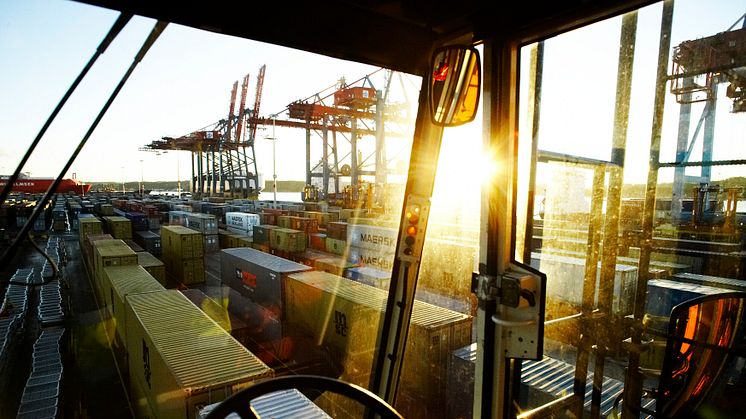
Press release -
Strong spring – weak autumn at the largest port in Scandinavia
The beginning of 2011 was marked by a sharp rise in volumes at the Port of Gothenburg. During the summer however, growth levelled out and in the autumn, there was a fall in import and export volumes for several categories of goods. Despite this, the figures for 2011 reveal record volumes for container traffic.
In total, 887,000 containers were shipped via the Port of Gothenburg last year, setting a new record. The number of cars increased by three per cent, whilst ro-ro units fell by three per cent. Around 11,000 calls by vessels were recorded during the year.
Magnus Kårestedt, Port of Gothenburg chief executive explains: "A large proportion of Sweden's foreign trade passes through the Port of Gothenburg and we see signs of fluctuations in the economy at an early stage. The financial unrest in Europe during the autumn is reflected tangibly in the fall in goods flows."
He continues: "Our direct routes to countries on other continents, such as Asia, reveal a more positive trend, highlighting very clearly how important direct routes are to Swedish industry."
Around 60 per cent of Swedish imports and exports in containers pass through the Port of Gothenburg. Despite the weak rate of growth during the autumn, container volumes increased by one per cent during 2011.
More freight by rail
Rail freight increased by one per cent during 2011 and the proportion of containers transported to or from the port by rail has remained steady at around 45 per cent. The rail shuttle system saved around 50,000 tonnes of carbon emissions last year.
Weaker European traffic
Ro-ro traffic fell by three per cent last year. In total, 549,000 ro-ro units passed through the port in 2011. According to Magnus Kårestedt, the fall is no surprise considering the situation in Europe. "We noted a particularly significant fall in paper volumes. But there are European routes that have developed positively during the year. The routes to Belgium for example."
More cars – fewer passengers
The number of cars transported reflects a pattern similar to other categories of goods – a strong spring with a weaker autumn. During the first half of the year, car volumes rose by 17 per cent. Following the downturn during the autumn, the increase for the year was three per cent. In total, 227,000 cars were shipped through the port in 2011.
Around 1,699,000 passengers travelled via the Port of Gothenburg last year, a fall of two per cent on 2010. Cruise passengers were the exception, with an increase from 52,000 to 62,000. Around 70,000 cruise passengers are expected to visit Gothenburg in 2012.
Oil and other forms of energy fell by 11 per cent with a final figure for 2011 of 20.4 million tonnes.
Magnus Kårestedt highlights the difficult market position facing refineries and storage companies. "Anticipated falls in oil prices have led to a reduction in storage. The two refineries at the port were also hit by maintenance stoppages during the year."
Despite the uncertain economic climate, there are bright spots on the horizon for 2012.
"We have in a short space of time acquired two new routes to the UK and three new rail shuttles, one of which is to Oslo. On top of this, a major shipping alliance has announced that they are thinking of including calls to Gothenburg in the spring on a direct route to Asia. Despite financial unrest, there is still a significant level of investment," concludes Magnus Kårestedt.
See enclosed document for details of the volume trend for each category of goods.
For further information, please contact Cecilia Carlsson, Corporate Communication Manager, Gothenburg Port Authority, phone +46 31 731 22 45.
Categories
Fact file: Port of Gothenburg
The Port of Gothenburg is the largest port in the Nordic region with 11,000 visits by vessels each year. One-third of Swedish foreign trade passes through the Port of Gothenburg as well as 65 per cent of all container traffic.
The Port of Gothenburg is the only port in Sweden with the capacity to receive the world's largest container vessels and has the broadest range of shipping routes within and outside Europe. The 23 rail shuttles that depart each day mean that companies throughout Sweden and Norway have a direct, environmentally smart link to the largest port in the Nordic region. The Port of Gothenburg has terminals for oil, cars, ro-ro, containers and passengers.

